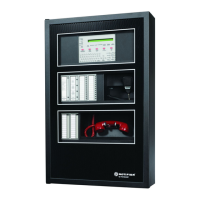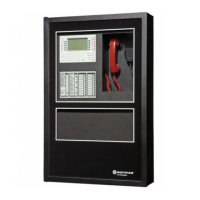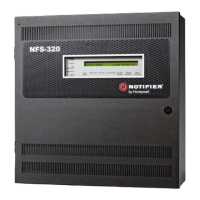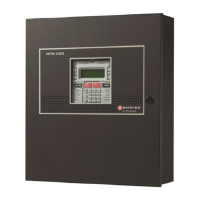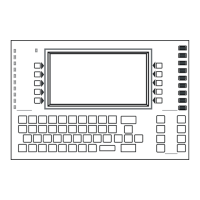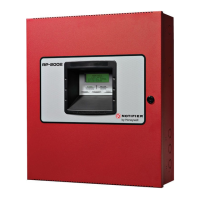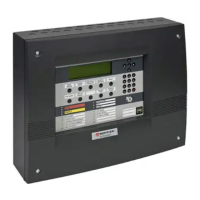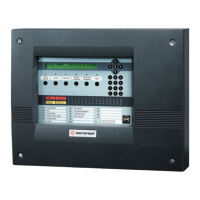48 NFS2-640/E Programming Manual — P/N 52742:L2 7/17/14
Programming The Utility Program
To select network options, follow these steps:
1. Using the arrow keys, move the blinking cursor to a selection.
2. Press the
NEXT or PREVIOUS key to select H or L (Threshold Ch. A, Threshold Ch. B). a three-
digit number (Node), or Y or N (Style 7).
When finished making selections, press the
ESC key three times to return the control panel to
normal operation.
When programming is complete, the panel must be reset to register the programming.
2.5 The Utility Program
There are five options available in the Utility Program. Enter the program and select an option as
described below.
From the “Program Change Selection” screen, press the 3 key to display the
“Utility Program” screen as shown below:
Descriptions of the five options on the Utility Program screen:
REGION=0 TBL.REMIND=2 ALA.SCROLL=N
LOCAL CONTROL=0 IP-ACCESS=0 DCC-mode:Y
Table 2.35 Utility Program Options (1 of 2)
Utility Option Description
REGION 0 = No special region setting (default)
1 = China
TBL.REMIND
TBL Reminder*
*
Use of a setting other
than “2” requires AHJ
approval.
This option provides trouble resound selections to meet the requirements of NFPA 72-2002,
which you can select as follows:
• Select * if you don’t want a trouble reminder
• Select 1 to sound a short trouble reminder tone every minute
• Select 2 to resound a trouble tone every 24 hours at 11:00 AM, and to send a reminder every
sixty seconds for acknowledged events.
• Select 3 to display a detector while in the alarm verification mode and no trouble reminder
• Select 4 for once a minute trouble reminder with alarm verification display
• Select 5 for trouble reminder resound every 24 hours at 11:00 AM with alarm verification
display, and to send a reminder every sixty seconds for acknowledged troubles
ALA.SCROLL
Alarm Scroll*
*
Setting this field to “Y”
requires AHJ approval.
This option allows the programmer to select how alarms are displayed.
• Select Y if you want each alarm displayed for approximately two seconds, and to
acknowledge all alarms with a single acknowledgement. (default)
• Select N if you want only the first alarm and the alarm count displayed, and to acknowledge
each alarm singly, point by point.
LOCAL
CONTROL
This option allows the programmer to disable local control of the
ACKNOWLEDGE/SCROLL DISPLAY
key,
SIGNAL SILENCE key, DRILL key and SYSTEM RESET key. Select local control as follows:
• Select 0 to disable local control
• Select 1 to enable local control (default)
• Select 2 to enable partial local control. This setting allows control of the
ACKNOWLEDGE and
SYSTEM RESET keys only (required in Chicago.)
Note that if the panel is to be controlled exclusively by a Display and Control Center (DCC),
Local Control should be disabled.

